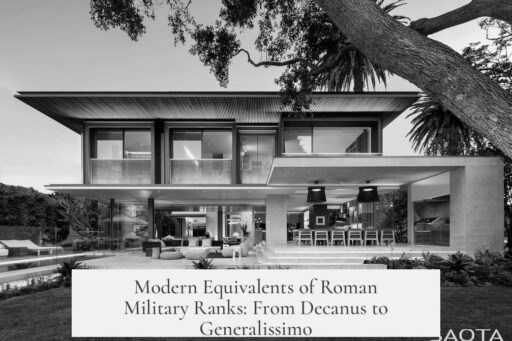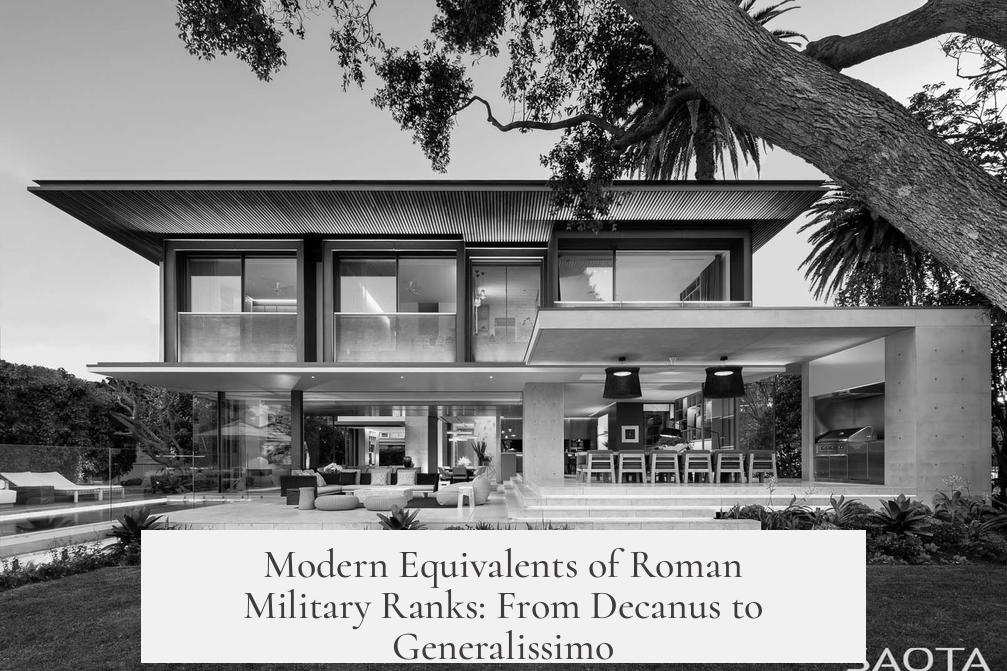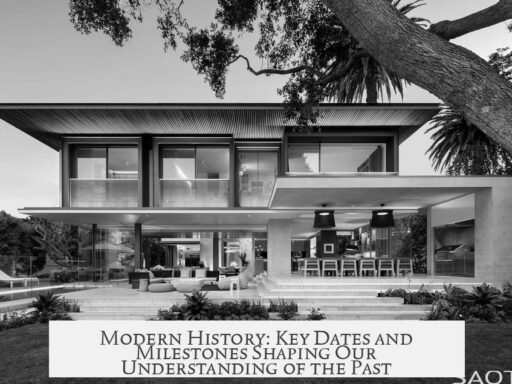The modern day equivalents of Roman military ranks vary based on responsibilities and hierarchy. The Decanus corresponds roughly to modern corporals or sergeants. Centurions, commanding around 80 men, align with warrant officers up to captains or majors. Tribunes equate to majors or lieutenant colonels, while Legion Legatus rank matches a brigadier general. The Imperial Legatus, or Imperator, corresponds to a full general.
Roman ranks often combined military and political roles. Unlike today’s professional military officers, senior Roman officers frequently held political office or governorships. This dual role complicates direct comparisons.
The Decanus rank leads small units, similar to corporals or sergeants who oversee squads in modern armies. Centurions commanded a unit roughly the size of a company, about 80 soldiers. Modern company sizes fluctuate between 40 and 150 troops, so the centurion’s authority parallels that of a captain or major in today’s forces. However, centurions uniquely ensured discipline and direct control over enlisted soldiers, combining duties now spread among several ranks, including lieutenants and sergeants.
Tribunes served as senior mid-level officers. Depending on experience and political influence, they would be similar to majors or lieutenant colonels, often overseeing larger subdivisions within a legion.
Legion Legatus commanded an entire legion, equivalent to a brigadier general in modern terms. They held broad tactical and administrative authority. The Imperial Legatus, or Imperator, occupied the highest rank with the authority akin to a general commanding multiple legions or an army group.
| Roman Rank | Modern Equivalent | Command Size/Role |
|---|---|---|
| Decanus | Corporal to Sergeant | Small unit/squad leadership |
| Centurion | Warrant Officer to Captain/Major | Company sized unit (~80 men) |
| Tribune | Major to Lieutenant Colonel | Senior officer with wider command |
| Legion Legatus | Brigadier General | Legion commander |
| Imperial Legatus (Imperator) | General | Army or multiple legions commander |
These comparisons remain approximate due to structural and functional differences between Roman and modern militaries. Today’s ranks are more specialized and less politically entwined. Company size and roles can vary by army and period, adding to the complexity. Still, this overview offers a useful framework bridging ancient and modern military hierarchies.
- Decanus aligns with corporals or sergeants.
- Centurion commands a company; roughly captain or major.
- Tribunes equate to majors or lieutenant colonels.
- Legatus = brigadier general; Imperator = general.
- Roman ranks combined military and political roles, unlike today.
What Would Be the Modern Day Equivalents of Roman Military Ranks?

Ever wondered what Roman military ranks would look like if Roman legions marched into today’s battlefield? It’s a fascinating question, blending history with modern military structure. Let’s jump right into it—Roman ranks have modern equivalents, but the match isn’t always perfect. It’s like trying to fit a square legionary shield into a round NATO framework!
Roman military ranks were unique, reflecting Rome’s social and political systems intertwined with military duties. Today’s ranks focus solely on military hierarchy, with less political crossover. This distinction alone makes comparisons interesting. So, what are the closest modern counterparts to these ancient roles?
Decanus: From Squad Leader to Corporal or Sergeant
Start small with the Decanus. Think of them as the frontline supervisors, responsible for a group of about ten soldiers. Their role aligns most closely with the modern Corporal or Sergeant. These are the go-to guys when a squad needs direction during combat.
The Decanus is the glue holding the basic unit together—like a squad leader today, ensuring discipline and order. Pretty straightforward, isn’t it? Just like your local sergeant keeping the troops moving, Decanus keeps the century in line.
Centurion: The Backbone Officer, From Warrant Officer to Captain or Major
The Centurion is where things get spicy. Centurions commanded centuries, roughly 80 men. Modern companies usually have 90-130 troops, so the size is roughly similar, but the roles are packed with nuance.
Depending on century and cohort, the Centurion role spans from a Warrant Officer to a Captain. In some views, they could even compare to a Major. Why the wide range? Because Centurions didn’t just lead; they were disciplinarians and trainers, a hybrid of modern lieutenants, sergeants, and even company commanders.
They didn’t command officers below them—instead, they ensured privates did what they were supposed to. Kind of like having a few jobs rolled into one, including enforcing discipline, planning tactics, and being the middle management of the Roman army.
Tribunes: From Field Majors to Lieutenant Colonels

Moving up, we have the Tribunes. Their rank varied based on experience and political weight. They range in modern comparisons from Majors to Lieutenant Colonels.
Tribunes often served as senior staff officers or aides to the legion commanders. They combined battlefield leadership with administrative duties. This role is absent in many modern forces as political rank and military rank stay separated today.
Legion Legatus: The Brigadier General of Antiquity
Next, the Legion Legatus was the man in charge of the whole legion, roughly 5,000 men. Their modern-day equivalent? A Brigadier General or the equivalent of a one-star general.
Legion Legates were powerful figures and, often, notable politicians or senators. They combined military ability with political authority, reflecting their dual power base—something you’d rarely see in today’s strictly military command structure.
Imperial Legatus (Imperator): The Generalissimo
The top dog was the Imperial Legatus or Imperator, the supreme commander of all forces. Today, we’d call this rank simply General or possibly a five-star general, but without the political office.
This rank was reserved for the emperor or his closest generals. They wielded both political and military clout, embodying absolute command. Modern generals have pure military command but generally lack political power—an important shift in military governance.
Why Can’t We Just Translate One-to-One?

Here’s the curveball: Roman commanders often held political office, something rare in modern military systems. The greatest Roman commanders were senators or provincial governors. Contrast this with modern armies, where political and military roles are strictly separated. The power dynamics are on an entirely new playing field.
Additionally, company and unit sizes differ between Roman and modern armies. A centurion’s century of 80 men doesn’t exactly match today’s company standards, which could range from 40 to over 150 soldiers. These variances complicate direct rank comparisons.
Putting It All Together: Practical Insights
For those curious how this might land in practical terms:
- If you were a Roman Decanus, you’d be that trusted sergeant leading squads and ensuring everyone is in line before the battle cry.
- As a Centurion, your day would jitter between company command, discipline enforcement, and tactical planning—much more responsibility than a single modern rank might suggest.
- Tribunes juggle staff duties and political heft, shaping strategy alongside the legion’s leader.
- Legatus commands a legion-sized force, essentially modern-day brigade or division levels, but with a political cape.
- The Imperator holds ultimate command— imagine a role combining a field marshal and a nation’s leader in one.
Final Thoughts: What Does This Mean Today?
Comparing Roman ranks to modern equivalents opens up a window into how military and political roles have evolved. It’s a reminder that leadership is multi-dimensional, especially in historical contexts where power blends the sword with the senate seat.
So, when you watch a historical drama or read about legions marching under their eagle standards, picture the Centurions and Legati wearing modern uniforms, juggling duties from sergeant to general, and a bit of political elbow-throwing too. This nuanced understanding lets us appreciate these ranks beyond mere titles, seeing them as roles vital to Rome’s formidable military machine.
Next time someone asks, “What would a Roman Centurion be in today’s army?” you’ll have a well-armed answer ready! And remember, history is never just about the past—it helps us see the present in sharper, clearer focus.




